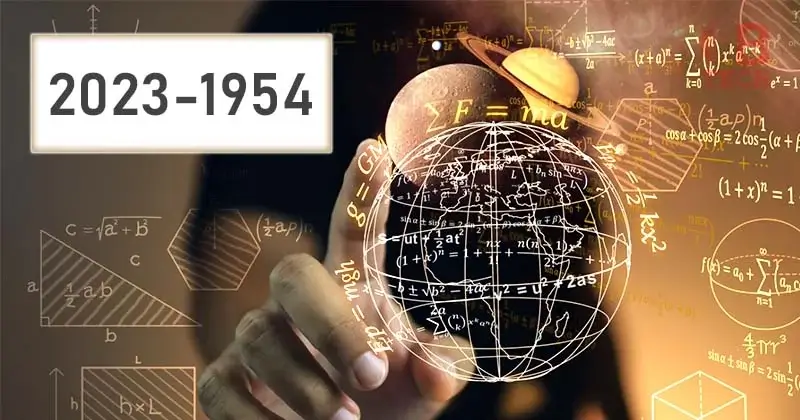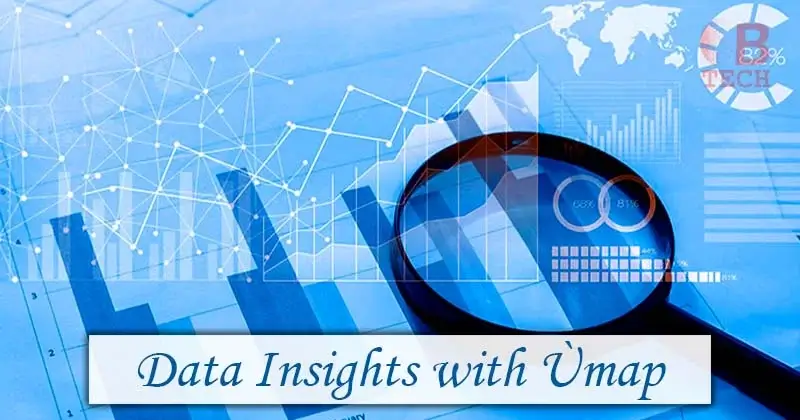Hop into the time machine and let’s embark on a captivating journey through the years 2023 and 1954! In this blog post, we’re delving deep into the fascinating world of 2023-1954, uncovering hidden gems and exploring exciting phenomena. We’ve got everything from converting this numerical combination into a percentage to calculating your age in future years. So, buckle up and let’s unravel the mysteries of 2023-1954 together!
Calculating Your Age in 2023 if You Were Born in 1954

Ever wondered how time seems to fly by? As we inch closer to 2023, it’s only natural to take a moment and reflect on our journey through the years. If you, like me, were born in 1954, you might be curious about how old you’ll be in 2023. Well, let’s crunch some numbers and find out together!
Using Simple Math to Determine Your Age
To figure out your age in 2023 if you were born in 1954, let’s do a simple subtraction. We’ll subtract your birth year from the target year. So, it’s 2023 – 1954 = X. That straightforward equation will give us the answer we’re looking for—X will represent your age when we reach that significant year.
Understanding the Formula for Age Calculation
Understanding this formula is key to figuring out your age in any given year. It helps us grasp our journey through time and appreciate the changes and experiences we’ve encountered along the way.
Exploring the Percentage Relationship Between 2023 and 1954
Now, let’s delve a bit deeper and look at the percentage relationship between these two significant years—2023 and 1954. We may get a percentage figure that represents their relative relevance within our chronology by dividing them (2023-1954).
Gaining Insights Through Percentage Calculations
Converting this ratio into a percentage using various methods offers intriguing insights into our historical progression. Practicing more examples of percentage problems related to these years can help deepen our understanding even further.
Acknowledging Historical Events and Milestones
While it’s fascinating to ponder personal milestones and past events, it’s also crucial to acknowledge other aspects of history that have shaped our world. One notable example is an entry within the National Vulnerability Database (NVD) called CVE-2023-1954.
Understanding Cybersecurity Vulnerabilities
This entry sheds light on an unauthorized frame window access message, raising concerns about cybersecurity vulnerabilities during that period. The NVD’s Information Technology Laboratory provides detailed information about CVE-2023-1954, including its description, severity level, and references used for research purposes, as well as weaknesses discovered alongside affected software configurations and Amazon Linux (ALAS-2023-1954).
As we journey through time, it’s essential to not only reflect on personal milestones but also to consider the broader historical context that has influenced our world.
Understanding How to Determine Your Age
Ever found yourself wondering how to calculate your age for a specific year? Well, understanding the formula for determining age can help you tackle that question effortlessly. It’s actually quite straightforward once you break it down!
Using the Age Calculation Formula
To calculate your age in a specific year, simply subtract your birth year from the desired year. For instance, if you were born in 1954 and want to know your age in 2023, all you need to do is subtract 1954 from 2023. The result? Your age in that particular year.
Breaking Down the Formula
Let’s dive a bit deeper into how this works. To find the difference between the two years, take the current year and deduct your birth year. Then, depending on whether you’ve celebrated your birthday yet in the desired year, add or subtract one.
The Formula for Determining Age
So, in a nutshell, the formula for determining age is: Desired Year – Birth Year + Adjustment (1 or 0). This adjustment factor accounts for whether or not you’ve reached your birthday yet in the desired year.
Impressing Others with Your Age Calculation Skills
Understanding this simple formula empowers you to easily determine how old someone will be at any given point in time. So, the next time someone asks, “How old will I be next year?”, you can impress them with this straightforward calculation!
Converting 2023-1954 into a Percentage

Have you ever wanted to know how to calculate the percentage of the numbers 2023 and 1954? Well, wonder no more! Converting these numbers into a percentage is a simple process that opens up a world of possibilities for analysis and comparison.
Dividing to Get the Decimal Representation
To convert this combination into a percentage, let’s start by dividing the number 2023 by 1954. This division will give us the decimal representation of the ratio between these two numbers. It’s a crucial step in the process.
Multiplying to Transform into a Percentage
But hold on tight because we’re not done just yet! Once we have the decimal value, we need to transform it into a percentage. To do this, simply multiply the decimal by 100. This final step allows us to express our ratio in terms of percents rather than decimals.
Unlocking Hidden Potential
And voila! Now you have your very own unique way of representing the relationship between these two years in percentage form. Converting numbers into percentages may seem abstract, but it can provide valuable insights across various fields such as finance, statistics, or demographics. It enables us to compare data points and understand their relative significance within different contexts.
Remembering the Power of Percentage
So, next time you encounter the numerical duo of 2023-1954, remember that there’s more than meets the eye. Convert it into a percentage and unlock its hidden potential for analysis and understanding!
Methods for Converting 2023-1954 into a Percentage
Converting 2023-1954 into a percentage might seem like a daunting task, but fear not! There are several methods you can use to accomplish this mathematical feat. Let’s explore two of them:
Using Basic Division and Multiplication
One method is by using basic division. Here’s how it works:
- Divide the numerator (2023) by the denominator (1954). You’ll receive a decimal number as a result.
- To express this decimal as a percentage, multiply it by 100 and add the percent symbol (%). This will give you the final answer in percentage form.
Utilizing Online Tools
Another method for converting 2023-1954 into a percentage is by using an online calculator or spreadsheet software. Many websites and applications offer easy-to-use tools that can quickly perform complex calculations for you.
- Input the numbers (2023 and 1954) into the designated fields of the online calculator or spreadsheet.
- Let the program do its magic! It will automatically calculate the percentage for you, saving you time and effort.
Practice Makes Perfect
Whichever method you choose, remember that practice makes perfect. The more familiar you become with these calculations, the easier they’ll become over time. So don’t be discouraged if it takes a few tries to get it right—keep at it, and soon you’ll be converting numbers into percentages like a pro!
Predicting Your Future Age: How Old Will You Be in 2023 if You Were Born in 1954?
Ever wondered how old you’ll be in the future? It’s a fascinating thought, especially if you hail from a different era. If your birth year is 1954 and you’re curious about your age in 2023, let me introduce you to the Future Age Calculator—a handy tool for unraveling this mystery!
Simple Calculation Method
Calculating your age in a particular year is a breeze. Just subtract your birth year from the desired year. In this case, subtract 1954 from 2023 to determine the number of years that have passed since your birth. This will give you a sneak peek at how old you’ll turn in that specific year.
Unlocking Insights with the Future Age Calculator
But wait, there’s more to the Future Age Calculator than just knowing your age. It’s a tool that allows us to reflect on our life journey, showcasing how far we’ve come over time. It’s truly remarkable to acknowledge all the experiences and memories we’ve amassed throughout the years.
Embracing the Excitement of Exploration
So, go ahead and give the Future Age Calculator a try! Discovering how old you’ll be in 2023 might spark some intriguing thoughts and insights into what lies ahead. Embrace the excitement of exploring time and cherish every moment of this captivating journey!
The National Vulnerability Database Entry: CVE-2023-1954

An unauthorized frame window access message has raised eyebrows among cybersecurity experts as they delve into the details of the National Vulnerability Database Entry: CVE-2023-1954. This intriguing entry, discovered by the Information Technology Laboratory at NVD, contains a wealth of crucial information about a significant vulnerability.
Mercoffdaperc Leak: Uncovering The Biggest Data Breach
Description and Severity
CVE-2023-1954 is classified as an unauthorized access vulnerability that permits attackers to take control of frame windows. Rated with a high severity level, this vulnerability poses a considerable threat, indicating potential for significant damage if left unaddressed. It’s a critical issue that demands immediate attention.
References and Additional Information
The entry includes references to related resources and additional information, offering a deeper understanding of the vulnerability’s nuances and potential impacts. These references are valuable for researchers and security professionals seeking more comprehensive analysis and remediation strategies.
Identifying Weaknesses
CVE-2023-1954 also highlights weaknesses associated with the vulnerability, pinpointing specific areas where organizations may be vulnerable to exploitation. Understanding these weaknesses is crucial for businesses to shore up their defenses and protect against potential threats.
Affected Software Configurations
Additionally, the entry outlines affected software configurations, providing insights into which systems are susceptible to this vulnerability. This knowledge is indispensable for IT teams tasked with assessing their organization’s risk exposure and prioritizing security updates.
Implications of an Unauthorized Access Message
An unauthorized frame window access message is a red flag, signaling potential security breaches and threats. Imagine yourself casually perusing the internet when all of a sudden, a pop-up window alerts you of an attempt to gain unauthorized access to your frame window. It’s a concerning intrusion that demands immediate action to safeguard your privacy online.
Delving Deeper with NVD’s Information Technology Laboratory
NVD’s Information Technology Laboratory plays a pivotal role in identifying and documenting vulnerabilities like CVE-2023-1954. Their detailed analysis sheds light on the severity and impact of the vulnerability, enabling users to grasp its implications fully.
Understanding the Key Elements
Description, severity, references, weaknesses, and affected software configurations are vital components of CVE-2023-1954. Each element provides valuable insights into the nature of the vulnerability, helping organizations devise effective mitigation strategies tailored to their specific circumstances.
By examining these critical aspects linked to CVE-2023–1954, companies gain a comprehensive understanding of the cybersecurity threat landscape, empowering them to implement targeted measures to mitigate risks and strengthen their defenses.
The Amazon Linux 2 nss-util Vulnerability (ALAS-2023-1954)

Exploring Cybersecurity Concerns
As we traverse the intriguing realm of 2023-1954, we encounter not only numerical puzzles but also pressing real-world issues, such as cybersecurity. In recent years, cybersecurity has emerged as a paramount concern for individuals and organizations alike, given the ever-evolving landscape of digital threats.
Understanding the Vulnerability
One such vulnerability that has garnered attention is the Amazon Linux 2 nss-util vulnerability, identified as ALAS-2023-1954. This vulnerability poses a potential risk to users of the Amazon Linux 2 operating system, specifically affecting the nss-util package utilized in SSL/TLS certificate validation processes.
Exploring Linuxia: A Reliable And Customizable Operating System
Taking Protective Measures
To safeguard your systems and data from such vulnerabilities, it is imperative to remain vigilant and proactive. Keeping your systems up-to-date with the latest patches from trusted sources is essential in mitigating risks associated with these vulnerabilities.
Additionally, implementing robust security practices across your network infrastructure is crucial. This includes employing strong passwords, regularly updating software applications, utilizing firewalls and intrusion detection systems (IDS), conducting routine security audits, and educating employees on best practices for online safety.
Staying Vigilant and Proactive
Remember, cybersecurity is an ongoing battle that requires constant vigilance. Therefore, staying abreast of emerging threats like ALAS-2023-1954 is vital. By adopting proactive measures and investing in robust security solutions offered by reputable vendors or service providers, you can significantly reduce the risks posed by cyber threats.
Navigating the Technological Landscape
As technology continues to advance rapidly, it is incumbent upon individuals and organizations to prioritize their digital defenses. By staying up to date on vulnerabilities such as ALAS-2023-1954 and putting protective measures in place that work, we may confidently and resiliently traverse the constantly evolving technological landscape.
FAQs About 2023-1954
1. How can I calculate my age in a specific year if I was born in 1954?
To calculate your age in a specific year, simply subtract your birth year (1954) from the desired year. For instance, if you want to know your age in 2023, subtract 1954 from 2023 to find your age in that year.
2. What insights can converting 2023-1954 into a percentage provide?
Converting 2023-1954 into a percentage allows for understanding the relative significance of these years within our timeline. It offers insights into historical progression and can be useful for comparison across different fields like finance, statistics, or demographics.
3. What cybersecurity threat is highlighted by the National Vulnerability Database Entry: CVE-2023-1954?
The National Vulnerability Database Entry: CVE-2023-1954 addresses an unauthorized frame window access message, raising concerns about cybersecurity vulnerabilities during that period. It signifies a potential risk for users and organizations, emphasizing the importance of staying informed about cybersecurity threats.
4. How can I protect my systems from the Amazon Linux 2 nss-util Vulnerability (ALAS-2023-1954)?
To protect your systems from the Amazon Linux 2 nss-util Vulnerability (ALAS-2023-1954), ensure that your systems are updated with the latest patches from trusted sources. Implement robust security practices such as using strong passwords, updating software regularly, and employing firewalls and intrusion detection systems (IDS).
5. Why is staying vigilant against emerging cybersecurity threats important in the digital landscape?
Staying vigilant against emerging cybersecurity threats is crucial because the digital landscape is constantly evolving, with new vulnerabilities and attack vectors emerging regularly. By staying informed and proactive, individuals and organizations can mitigate risks and protect against potential cyber threats effectively.
Also Read: Understanding RDBS: Relational Databases Explained



